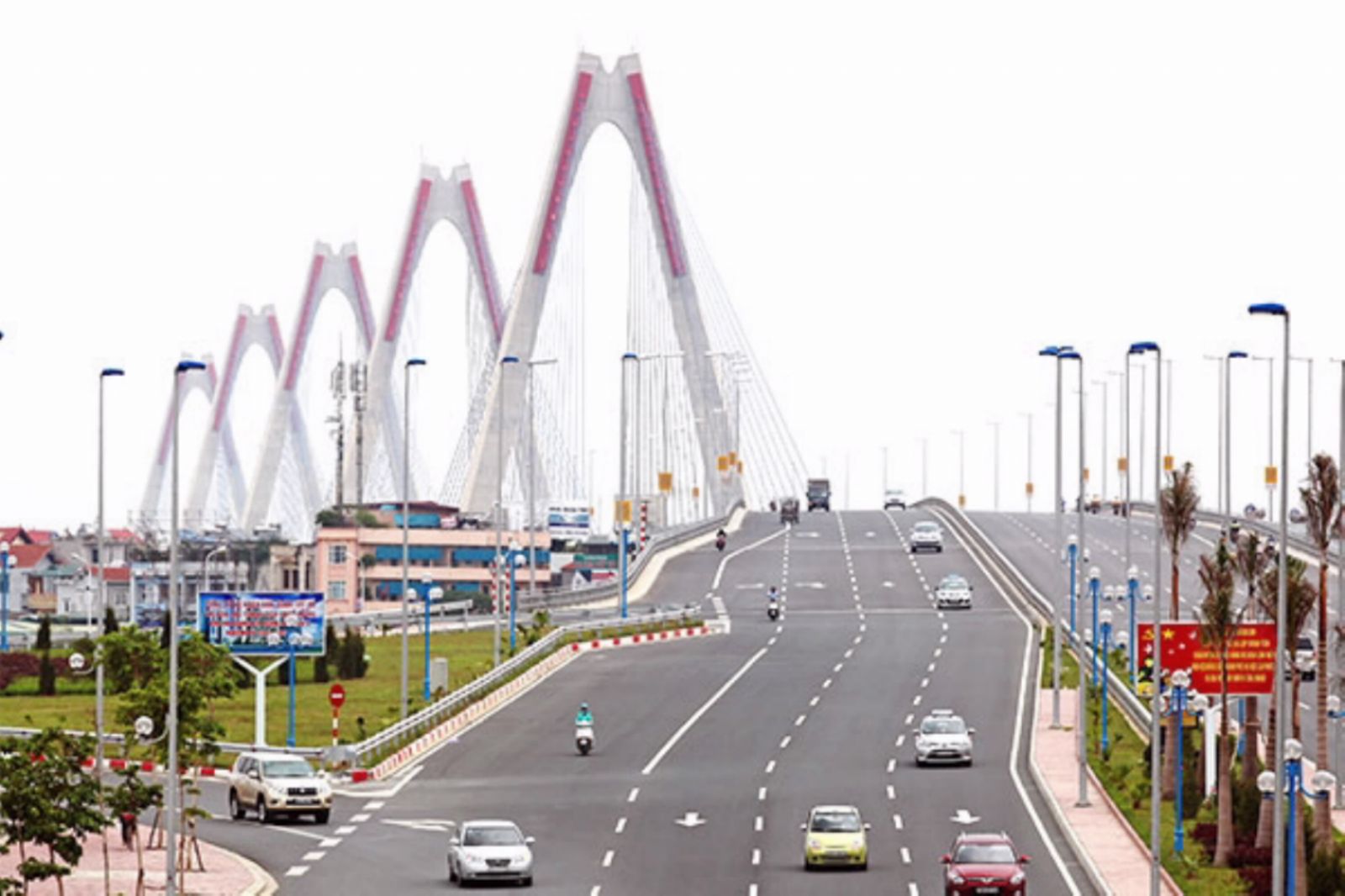The Japanese Partnership for Quality Infrastructure Initiative, which has been launched a few years ago with Vietnam being the first priority country, has contributed to turning the South East Asian country into the biggest focus for Japan’s infrastructure involvement by far.

Japanese firms invested in Nhat Tan Bridge in Hanoi.
Japanese investment in Vietnam’s infrastructure into pending projects has been so far reached US$209 billion – more than half of Japan’s total, Bloomberg cited a report from Fitch Solutions. That includes a US$58.7 billion high-speed railway between Hanoi and Ho Chi Minh City, the two largest cities in Vietnam.
In Vietnam, Japanese capital has been poured into a number of big infrastructure projects, including Line 1 and 2 of Hanoi Urban Railway, Line 1 of HCM City Metro, Terminal 2 at Noi Bai International Airport, Nhat Tan Bridge, Nhat Tan-Noi Bai expressway, Cai Mep-Thi Vai port, Lach Huyen port, and Tan Vu-Lach Huyen road.
They are also keen on pouring into some other mega projects in Vietnam, such as Long Thanh International Airport, North-South Highway, inter-regional expressway, urban railways in Hanoi, Ho Chi Minh City and other cities, and especially the Hanoi-Ho Chi Minh City high-speed railway – the largest infrastructure project in Vietnam for the next decade.
Meanwhile, Vietnam’s socio-economic development strategy for the 2011-2020 period describes infrastructure development as one of the key tasks as well as one of the three strategic breakthroughs needed to be achieved, focusing on transport and urban infrastructure.
Vietnam is calling for foreign investment in infrastructure projects as the country needs some US$18-20 billion per year for infrastructure development, an amount the state is unable to finance due to budget constraint.
In the latest move, Prime Minister Nguyen Xuan Phuc affirmed at a round-table talk with some of Japan’s leading corporations in Tokyo on July 1 that Vietnam welcomes high-quality investment projects from Japan, especially in infrastructure.
PM Phuc said Vietnam is appealing for ODA funding and other sources of capital for infrastructure development, one of the country’s prioritized fields.
Meanwhile, the Japanese sides said the Vietnamese government should focus on developing infrastructure, particularly a comprehensive transport system which connects ports and big cities.
Rising trend
The investment from Japan in the Vietnamese infrastructure is forecast to surge in the coming time, said Masaaki Yamada, the managing executive officer and global head of the Energy and Natural Resources Finance Group at the Japan Bank for International Cooperation (JBIC), which plays an important role in arranging capital for the Japanese government-guaranteed infrastructure projects in Vietnam. Yamada added that JBIC is likely to arrange bigger loans for Vietnamese firms, especially those developing substantial infrastructure and energy projects.
However, to lure more Japanese investors in Vietnam’s infrastructure projects, experts said that the government should streamline regulations in the public-private partnership (PPP) investment model as the investors are still concerned about policies to ensure their rights.
At present, PPP investment is regulated by Decree No.15/2015/ND-CP and Decree No.30/2015/ND-CP. Despite improvements, a lack of guaranteed policies, such as the risk-sharing mechanism, exchange rates and revenue guarantees, which are considered the top most concerns among foreign investors, has discouraged foreign investors from joining transport infrastructure projects in Vietnam despite their great interest.
At the release of the outlook of the Hanoi-Ho Chi Minh City high-speed railway project last week, analysts from Fitch Solutions said besides financing, another potential hurdle for the implementation of the project is the ability to attract private sector interest. The analysts cited the cancellation of the country’s first PPP transport project – the US$750 million Dau Giay-Phan Thiet Expressway Project – last year due to the withdrawal of potential investors’ bids over financing uncertainties as an example.

















